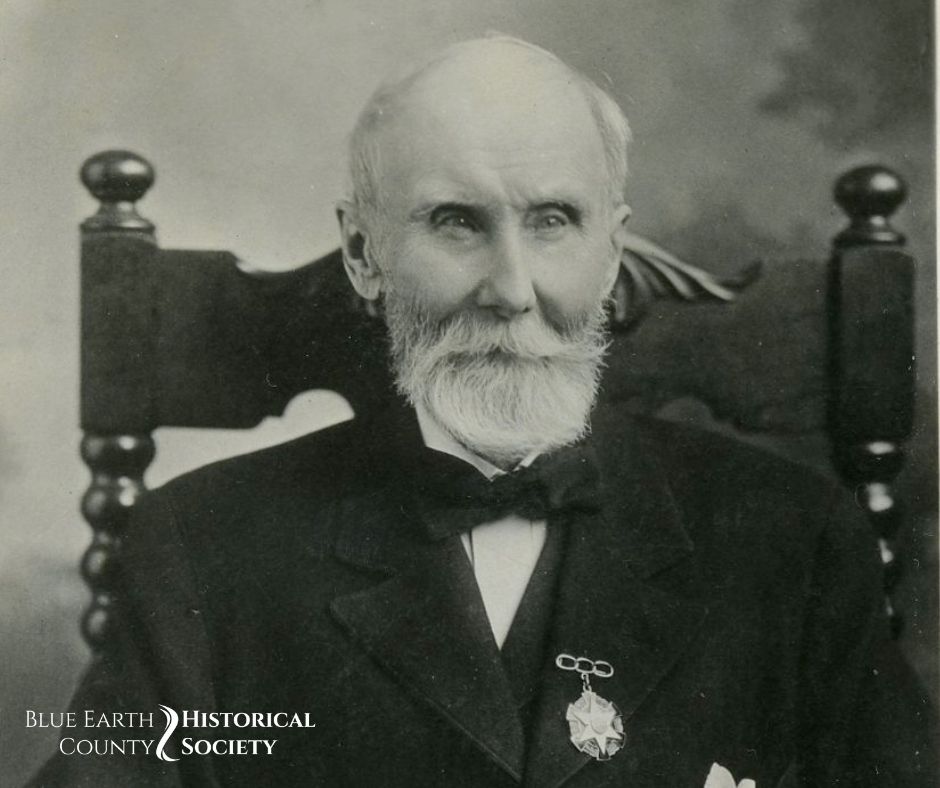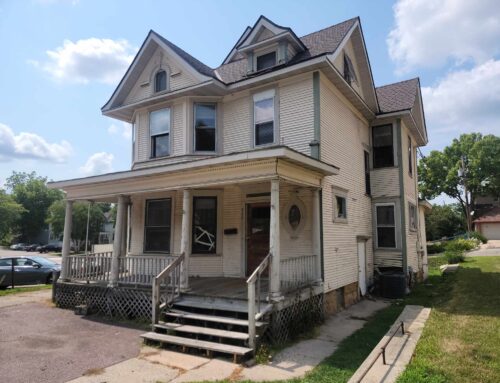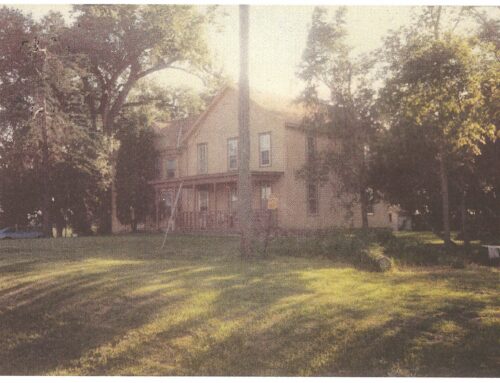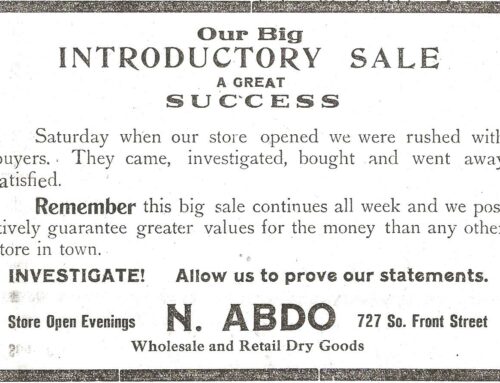 Many residents of Blue Earth County may well have heard of the Ben Pay Hotel. Some of us have been in the area long enough to have seen it. But how many of us know the story of the hotel? Who was Ben Pay, and why did he have a hotel named after him?
Many residents of Blue Earth County may well have heard of the Ben Pay Hotel. Some of us have been in the area long enough to have seen it. But how many of us know the story of the hotel? Who was Ben Pay, and why did he have a hotel named after him?
Benjamin D. Pay was born 2 Oct 1831 in Dover, England. As a child of 5, he and his family immigrated to Watertown, New York, a city 30 miles south of the Canadian border. His father ran a bakery and cracker business, and young Ben became a cracker peddler at 14, traveling around the area as a salesman. He quickly found this tiresome, so in 1851 he accepted the advice of his friend Horace Greeley to “go west”.
Pay traveled to Watertown, Wisconsin, beginning work as a salesman for the cracker factory there, George Head & Bro. He then married Mary Amelia Roper in Nov 1853, in Juneau, Wisconsin. Soon after, they started with a team and wagon to seek a home of their own in the “wilds” of Minnesota territory, which was not to become a state until 1858.
They settled in Garden City in 1856, when there were still only three houses. There was not even a post office yet – this was established the following year. Pay notes that their first winter there was Minnesota’s hardest winter yet.
He spent most of that first winter teaming back and forth between Mankato and Saint Paul. Much of 1858 was spent logging in Mankato. During the spring of 1858, he operated a livery in Mankato but returned to Garden City afterward. Then came the Dakota Conflict.
Pay wrote that he and his family could, from their home in Garden City, see the smoke from the log cabins burning in New Ulm, as the Dakotas attacked the people there. Then, the Dakotas began making their way closer to Garden City. Pay remembers him and his wife wrapping their small children up for safety, leaving their home out of fear. Three years later came more scares, during which he and his wife would often hide the children in cornfields while they worked to save as much wheat as possible.
In 1862, when the war was over, Pay moved his family to Mankato. He quickly was appointed the deputy sheriff and was asked to assist in furnishing wood to make the gallows for the hanging of the Dakota men. During the trials, he also gave evidence to support the conviction of one man accused of participating in the murder of the Jewett family of Rapidan.
During his time as a sheriff, there were many attempts on his life, both in the open and in ambush. His escapes were considered miraculous by many, and he was admired for his bravery. Later, he received a pension from the state for his many acts of bravery during these troubled times. Pay himself would simply state that he had “some very lively times” as sheriff.
Among that liveliness was his part in the capture of the Younger brothers, near Madelia. He notes specifically that he sat with Cole Younger after his capture, tending to his gunshot wounds. Pay also accompanied the brothers on the train to the Stillwater Prison. Minnesota’s first, it held all three Younger brothers. Bob Younger died in prison in 1889; Jim was pardoned in 1901, committing suicide a year later; Cole, also pardoned in 1901, died in 1916 in Missouri. The Youngers were model prisoners, once keeping fellow prisoners from escaping during a fire. Cole founded the longest-running prison newspaper in the United States.
Pay would often talk about how dear Mankato was to him, as he watched it grow from a new settlement into a flourishing city. He was active in the community; he became a member of the Episcopal Church at its’ inception, and also took great pride in the Mankato Historical society. As a younger man, it was rare for him to not be in an official position in the town or county. He also assisted in organizing the first hook and ladder fire company, later becoming one of the first chiefs.
During his time as deputy sheriff, he began a livery business with the sheriff, D.H. Tyner, which burned in the winter of 1863/64. Soon after, Pay began a livery of his own, which he operated until 1902; his son William was his partner, starting in 1888. This livery was known as one of the finest and most extensive establishments in the city. He sold that in 1900, building the Pay Candy Company in 1902.
Within 2 years, there was a sugar shortage, seriously curtailing the candy business. Due to this, he decided to go into the hotel business as well, renting rooms on the 2nd floor of his building, continuing candy making on the main and basement floors. However, the fumes were not appreciated by their tenants, so the candy business soon moved to Cherry Street. In 1914, that business was sold, and the family-focused on the hotel.
The hotel stayed put for about twelve years when greater demand gave cause for an addition. By this time, Mr. Pay had died, but his sons remodeled the old factory into a 6 story hotel, which they named in their father’s honor. The Ben Pay Hotel opened in 1926 at Second and Hickory Streets, where it stayed until 1967 when it was demolished to make way for a parking garage. That in turn was later demolished, replaced by the HECO building in 1983.
Benjamin D. Pay died on February 10, 1923, in the home he had built for his family in 1880. He had lived there with his two daughters since the death of his wife seventeen years prior. At the impressive age of 91.







Leave A Comment